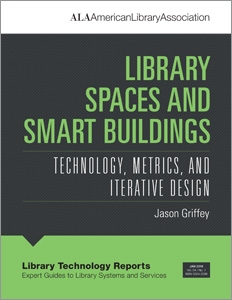Primary tabs
You don't need to be an ALA Member to purchase from the ALA Store, but you'll be asked to create an online account/profile during checkout to proceed. This Web Account is for both Members and non-Members. Note that your ALA Member discount will be applied at the final step of the checkout process.
If you are Tax-Exempt, please verify that your account is currently set up as exempt before placing your order, as our new fulfillment center will need current documentation. Learn how to verify here.
- Description
- Table of Contents
- About the authors
Library Technology Reports, January 2018 (54:1)
As the world of information access has pivoted from physical goods to digital screens, the ways that libraries measure themselves have changed. For years, measurements such as door counts, circulation tracking, and material tracking have been used to evaluate library building usage. With new advances in sensor technology, artificial intelligence and machine learning, computer vision, and more, we are now beginning to be able to monitor spaces in ways that were previously unthinkable.
In Library Technology Reports (vol. 54, no. 1), “Library Spaces and Smart Buildings: Technology, Metrics, and Iterative Design,” Jason Griffey explores these technologies and provides librarians and other interested parties with a look into what’s possible in the current state of technology for smart library buildings. In this report, Jason Griffey
- Covers three case studies that explore how librarians are using technological tools to analyze library spaces
- Shares new ways to think about your space and how you can measure building usage
- Explores the future of technological change and smart library buildings
Looking at three different projects that involved space metrics and analysis in libraries, this report shows how Virginia Tech; Concordia University in Montreal, Quebec, Canada; and the Measure the Future project are using technological tools to analyze library spaces to improve their environment for their users. Virginia Tech is researching how furniture movement acts as a stand-in for patron activity. Concordia University experimented with a project that monitored noise levels. The Measure the Future project is using computer vision to see how patrons move around in library spaces and derive “attention” measures from those movements while doing so with a strong protection on any sort of identification of patrons. Finally, Griffey takes a look at what the next five to ten years of technological progress will bring and how that might change the possibilities for a smart library.
- Chapter 1—Introduction
Jason Griffey
- Chapter 2—How to Measure the Future
Jason Griffey
- Chapter 3—Raspberry Pi and Arduino Prototype: Measuring and Displaying Noise Levels to
Enhance User Experience in an Academic Library
Janice Yu Chen Kung
- Chapter 4—Building Intelligent Infrastructures: Steps toward Designing IoT-Enabled Library
Facilities
Jonathan Bradley, Patrick Tomlin, and Brian Mathews
- Chapter 5—Future Directions
Jason Griffey
Edited by Jason Griffey
Jason Griffey is a librarian, technologist, consultant, writer, and speaker. He is the founder and principal at Evenly Distributed, a technology consulting and creation firm for libraries, museums, educational institutions, and other nonprofits. Griffey is an Affiliate of metaLAB at Harvard University and a former fellow at the Berkman Klein Center for Internet and Society also at Harvard. He was a winner of the Knight Foundation News Challenge for Libraries in 2015 for the Measure the Future project (http://measurethefuture.net), an open hardware project designed to provide actionable use metrics for library spaces. Griffey is also the creator and director of the LibraryBox Project (http://librarybox.us), an open-source portable digital file distribution system. He has written and spoken internationally on topics such as the future of technology and libraries, personal electronics in the library, privacy, copyright, and intellectual property. To learn more about Griffey, visit his website http://jasongriffey.net.
Library Technology Reports
Published by ALA TechSource, Library Technology Reports helps librarians make informed decisions about technology products and projects. Library Technology Reports publishes eight issues annually and provides thorough overviews of current technology. Reports are authored by experts in the field and may address the application of technology to library services, offer evaluative descriptions of specific products or product classes, or cover emerging technology. Find out more information on this publication and how you can subscribe here.



